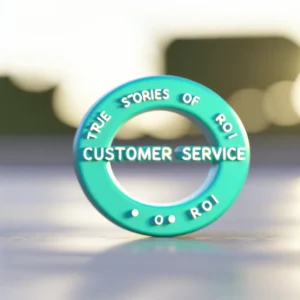In today’s competitive business landscape, organizations face the challenge of creating exceptional customer experiences that foster loyalty and drive growth. You may encounter difficulties meeting consumer expectations, streamlining customer interactions, and leveraging technology effectively. Understanding how to navigate these pitfalls and implement a robust Customer Experience Management (CXM) strategy is essential for long-term success.
As you embark on enhancing your CXM practices, consider the importance of harnessing customer data and feedback. This allows you to gain valuable insights into customer behavior, preferences, and pain points. By implementing best practices that prioritize data-driven decision-making, you can tailor experiences that resonate with your audience and build deeper, lasting relationships.
The digital era mandates a seamless and consistent experience across multiple channels. You must ensure that your communication remains fluid, regardless of whether customers reach out via social media, email, or in-store visits. As you read through this article, consider how you can adopt these insights to evolve your business strategy, making CXM a foundational component of your growth journey.
Understanding CXM: The Foundation of Customer Experience Management
Customer Experience Management (CXM) is critical to your business strategy, focusing on the interactions between your company and its customers. By understanding and implementing CXM best practices, you significantly improve customer satisfaction and loyalty, driving business growth. You must prioritize enhancing the customer journey to meet evolving consumer expectations.
A strong CX strategy involves gathering data from various touchpoints to analyze customer behavior and preferences. For instance, a company called “Clínica Vitalis” utilized customer feedback from surveys to enhance their services, resulting in a 30% increase in satisfaction scores. Business leaders like you should leverage these insights to refine offerings and tailor experiences.
By applying CXM best practices, your organization can shift from product-centric approaches to customer-centric strategies, fostering stronger relationships. For example, “Transportadora Prime” reassessed its service delivery based on customer preferences and saw a 25% increase in client retention rates.
Incorporating omnichannel support is essential. Customers today interact through multiple channels, including social media, email, and in-store visits. “Loja Online DaJu,” for instance, implemented an omnichannel approach and maintained a consistent brand voice, achieving an impressive 20% increase in customer engagement.
Moreover, continuous evaluation and adaptation of your CX strategies are crucial. Engaging customers through surveys and analytics helps identify pain points, strengthening your relationships and showcasing your commitment to exceptional experiences.
Key CXM Best Practices for Enhancing Customer Experience
Implementing effective CXM best practices elevates customer experience and drives growth. Focus on personalization, engagement, and consistent communication across all channels to deepening relationships and fostering loyalty.
Utilizing customer data effectively is vital. Companies analyzing customer behavior can tailor offerings, as demonstrated by “Escritório de Contabilidade ConteMix,” which increased retention rates by 15% through targeted marketing. This data-driven approach enhances satisfaction and improves retention rates.
Multichannel support is crucial for a strong CX strategy. Customers expect seamless experiences across platforms, appreciate interactions via chat, email, or social media. “Transportadora Andrade” adopted an omnichannel platform, leading to a 20% increase in customer satisfaction.
Employee engagement is pivotal as well. A motivated workforce enhances service delivery. Consider how “Grupo de Comércio Jota” invested in employee training, which resulted in a 25% improvement in customer interaction quality, ultimately driving satisfaction and loyalty.
Regularly measuring and analyzing CX strategy effectiveness is essential. Constructing feedback loops through surveys and metrics empowers informed adjustments. “Comércio Familiar” improved its customer loyalty program and saw a 15% boost in satisfaction by incorporating customer feedback into its strategy.
Developing a Winning CX Strategy: Steps for Implementation
Establishing a robust CX strategy is vital for driving business growth. Start by understanding your customers’ needs through surveys and feedback analysis. This foundational insight allows effective strategy development.
Defining clear objectives is crucial. These should align with your overall business goals, focusing on customer satisfaction and retention. For example, “Hospital Saúde Total” mapped customer journeys, identifying touchpoints that led to a 20% increase in service satisfaction.
Empowering your team with tools is imperative. Equip your employees with the knowledge to deliver exceptional experiences. “Rede de Lojas Elétricas” implemented an omnichannel platform for streamlined communication, enhancing service provision efficiency.
Consistently measuring the effectiveness of CX efforts is essential. Using metrics like NPS, CSAT, and CES allows ongoing strategy adjustments. “FitMart” tracked these metrics to refine its approach, resulting in a 30% increase in customer engagement.
Fostering a customer-centric culture is crucial. Engage leadership and all employees in the significance of excellent customer experiences. This cultural shift creates collaboration across departments, implementing CXM best practices, significantly boosting customer satisfaction.
Measuring Success: KPIs and Metrics for CXM
Establishing effective KPIs and metrics is critical for implementing CXM best practices. Selecting the right KPIs refines your CX strategy and drives sustained business growth.
Net Promoter Score (NPS) is paramount for measuring customer loyalty. “Loja de Roupas Coloridas” achieved a high NPS, translating into increased referrals and repeat business. Monitoring CSAT highlights areas needing improvement.
Consider Customer Effort Score (CES) which evaluates ease of interaction. “Serviço de Atendimento Simples” optimized the customer journey, reducing effort score by 15%, positively influencing customer loyalty.
Track retention and churn rates to evaluate CXM effectiveness. A low retention rate indicates potential dissatisfaction among customers. “Tech Solutions Ltda” identified and addressed product complaints, improving retention by 25% and preventing churn.
Utilizing omnichannel analytics is vital. It ensures all customer interactions are unified and analyzed, providing a holistic view of the customer experience. This enables informed decisions aligned with CXM best practices.
The Role of Technology in CXM: Tools and Innovations
Technology plays a crucial role in shaping effective CXM strategies. Integrating advanced tools enhances interactions and streamlines processes, driving efficiency and satisfaction.
One cornerstone is data analytics. Businesses harness customer data to gain insights into preferences and pain points. “Clínica Saúde Plena” utilized advanced analytics to segment its audience, enhancing engagement and loyalty.
Innovations like AI and machine learning revolutionize customer service. “Assistência 24h” implemented chatbots, improving response times and enhancing the overall customer journey with timely support.
Omnichannel support platforms facilitate seamless communication across channels. A unified approach ensures consistency in messaging, allowing businesses to meet customer demands effectively. “Varejo Plus” experienced a significant 30% increase in customer loyalty after implementing such a platform.
Mobile technology is also reshaping interactions. With consumers relying more on smartphones, optimizing websites for mobile use significantly boosts accessibility and engagement. “E-commerce Flex” achieved a 25% increase in mobile traffic by prioritizing mobile-first strategies.
Real-World Examples: Successful CXM Strategies from Leading Companies
Many leading companies have effectively implemented CXM best practices, showcasing the role of strategic customer experience management in propelling growth.
Amazon is an exemplar of customer-centricity, utilizing extensive data analytics to personalize shopping experiences. Through continuous feedback, they achieved a remarkable 40% increase in repeat purchases.
Starbucks leverages its rewards program to enhance engagement. By integrating mobile technology, they saw a 35% increase in customer retention, reinforcing the importance of digital solutions.
Adobe’s holistic approach, utilizing data, design, and storytelling, allows for optimal customer journey mapping. Their strategies have led to a 50% increase in customer satisfaction and loyalty metrics.
Zappos demonstrates the impact of company culture on CXM. Their dedication to exceptional service boosted customer satisfaction by 20%, underscoring the importance of employee empowerment.
Nike creates community engagement through their digital platforms, fostering loyalty and gathering insights for continuous improvement in their CX strategy, demonstrating effective two-way interactions.
Future Trends in CXM: Preparing for the Evolving Landscape
As businesses navigate the complexities of the digital era, understanding future CXM trends is essential for sustained growth. Personalizing interactions and integrating advanced technology should be at the forefront of your strategy.
AI and machine learning are revolutionizing customer engagement by enabling real-time data analysis. Companies that adopt these technologies can respond swiftly to customer needs, streamlining operations and enhancing experiences.
Omnichannel support is critical for meeting customer expectations. Businesses must ensure seamless experiences regardless of the platform. “Loja de Alimentos Frescos” achieved a 30% increase in customer satisfaction with integrated omnichannel strategies.
Creating a customer-centric culture is vital. Engaging employees at all levels to value customer feedback can refine your strategy. For example, “Indústria de Móveis Modernos” adopted this approach, leading to 25% growth in customer loyalty.
In summary, prioritizing technological innovations and personalization are crucial for future CXM success. Companies that embrace omnichannel strategies and foster a customer-focused culture will thrive in an evolving marketplace.
The Impact of CXM Best Practices on Business Growth
Implementing CXM best practices drives business growth across various sectors. Fostering strong customer relationships translates to increased sales and retention, establishing a sustainable growth cycle.
Effective CX strategies rely on a deep understanding of customer needs. “Serviço de Entrega Rápida” tailored services using analytics, leading to a 30% boost in customer satisfaction and long-term loyalty.
CXM integration into company culture ensures all employees prioritize customer satisfaction. “Rede de Hotéis Conforto” enhanced service delivery through a customer-centric culture, yielding a 25% increase in brand value.
Using omnichannel support enhances customer journeys. Consistent experiences empower customers to engage at their convenience. “Plataforma de Cursos Online” reported a 20% improvement in customer feedback after implementing streamlined support systems.
Measuring and responding to feedback optimizes strategies. “Automação e Tecnologia” continuously assessed customer insights, resulting in a significant improvement in service delivery and a 15% increase in customer acquisition.
To explore effective omnichannel solutions that support these initiatives, visit Nexloo. Prioritize these best practices to enhance customer loyalty and drive performance metrics in today’s competitive business landscape.









